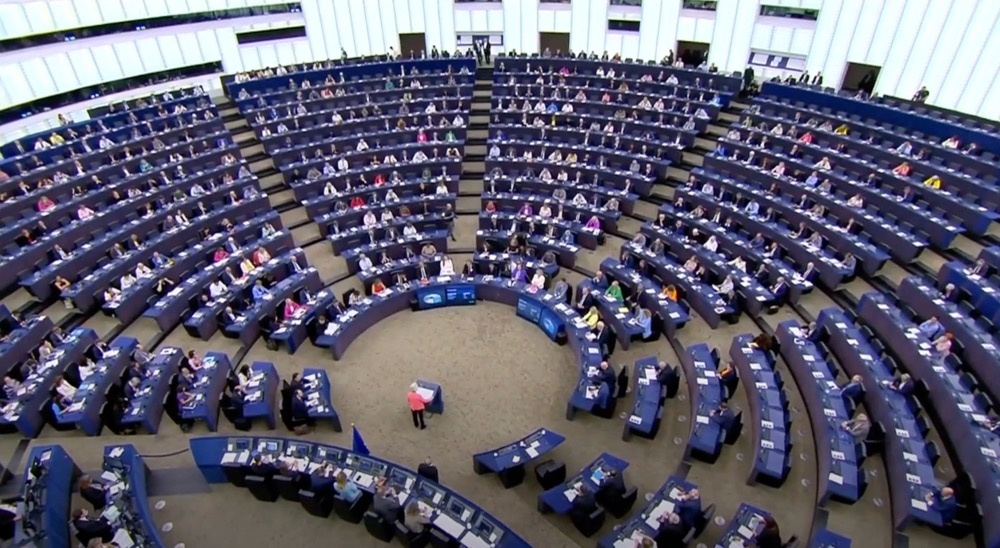IRA, EGD and now the EU move on China EVs – governments are showering mining with money

The European Union will launch an anti-subsidy investigation into Chinese electric vehicles, European Commission president Ursula von der Leyen told the bloc’s lawmakers in an annual address on Wednesday.
“Global markets are now flooded with cheaper Chinese electric cars and that price is kept artificially low by huge state subsidies. This is distorting our markets,” von der Leyen told the European parliament in Strasbourg, and just to make sure the scale of the problem is not lost on anyone she added that European carmakers “are often undercut by competitors benefiting from huge state subsidies.” It’s huge.
Considering the high stakes and troubling outlook that particularly the German mass market automakers like Volkswagen are facing, the eventual imposition of tariffs or other measures to limit Chinese carmakers’ access to Europe has an air of inevitability to it.
European carmakers already have a number of successful joint ventures inside China and at the beginning of last year Beijing scrapped ownership restriction for foreign carmakers entirely, so how the country could further open up its market to the EU is unclear.
Mad at made-in-China
Chinese EVs are scarcer than Chinese-made electric golf carts in the US and the subsidies incentives under the $430 billion-plus Inflation Reduction Act (IRA) are designed to keep it that way.
The Biden administration’s grants, subsidies incentives and loans to build its EV supply chain under the IRA led to consternation in Brussels over how to respond. The European Green Deal (EGD) is huge, and just to to reiterate, it’s huge – at least €600 billion from the continent’s covid recovery plan is being funnelled into the program.
For the EU, bolstering its eastern flank to defend its car industry is a logical next move.
The middle kingdom’s vehicle exports surpassed South Korea in 2021, then overtook Germany in 2022, and this year will take top spot from Japan. Trade data indicates a total of 2.8 million vehicles were exported from China during the first 7 months of 2023 including 1.8m ICE-powered vehicles, a 74% jump compared to last year.
At the recent Munich auto expo 50 Chinese companies displayed their wares and even the most ardent euroland car lovers agreed, they stole the show.
There may be a case to make that China’s growing success on European car markets is the result of predatory practices and Beijing pouring money into its industrial champions, but if the IRA and the EGP is not a dollar short, it’s more than a day late.
China powers ahead, in Europe
The rapid success of Chinese automakers in dominating all aspects of the global mine-to-megawatt supply chain – the key to EV affordability – over little more than a decade is short of astonishing. How Chinese electric cars, which are shot through with high-tech features often not found in US and European-made vehicles, were able to leapfrog the West, is not.
Europe has reason to worry. From a standing start, China has now cornered a full fifth of Europe’s EV market.
Adamas Intelligence tracks electric passenger car registrations and the metals contained in their batteries in over 100 countries. The Toronto-headquartered research consultants’ EV Battery Capacity and Battery Metals Tracker shows that in the first half of 2023, 19% of all GWhs delivered to EV (and hybrid) buyers in Europe, including Britain and non-EU states, were contained in China-made EVs and packs.
In absolute terms, the battery power exported to Europe from China has grown more than 51% year to-date – a total of 14 gigawatt hours. And China is stepping on the accelerator. The month of June saw 71% more made-in-China GWhs end up in Europe compared to June 2022, cornering a full fifth of the market.
Cheap but good
European car-buyers probably won’t be pleased if the European Commission’s response leads to higher EV prices and less variety (as it likely will).
Adamas data show the best-selling electrified car in China in 2023 is the BYD Song Plus DM-i plug-in hybrid, with a range of 1,000 km, including 150 km in fully electric mode. It goes for a song in its home country – just $27,000. Given the cutthroat competition there it can probably be had for even less.
For European car buyers struggling to cope with rolling energy crises the ability to drive from Berlin to Paris in an sleek compact SUV on a single charge won’t go unnoticed. (Neither would the rotating 13” TikTok-ready touchscreen.)
The Song is not available in the US or Europe although Brazil has taken more than 1,000 deliveries in 2023. In China, BYD has sold Songs to the tune of 229,000 units in the first half of this year.
Chinese car shoppers enjoy an embarrassment of riches with 110 (yes, that’s one-hundred-and-ten) different brands and more than 300 different electrified models to choose from.
The Commission may be pleased to hear that the majority of Chinese EV exports to Europe this year were non-Chinese brands, including cars made by BMW and Dacia in China. The fact that the best part of these shipments were Teslas only complicates matters.
Possibly slapping tariffs on the US electric car pioneer because it assembles EVs and uses batteries made in Shanghai won’t please Washington but makes it clear any legislation that comes out of the investigation won’t be easy to navigate.
A fast boat from China
For miners supplying the battery metals, the EU-China EV spat is simply more fuel on the fire started by the IRA and continued by EGP.
Made-in-China EVs have hauled 30,000 tonnes of battery metals onto European roads so far this year.
Adamas data shows that the batteries of made-in-China EVs exported to Europe over the first six months of 2023 contained over 8,000 tonnes of lithium carbonate equivalent, representing 18% of Europe’s total consumption over that period, and an increase of 67% year-on-year.
No doubt when sodium-ion batteries, already garnering market share in China, fully take off, Europe should expect even more salted roadways.
Similarly, 20% of graphite deployed onto Europe’s highways and byways through the first half of 2023 hit the road in China-made EVs and packs, totaling almost 13,000 tonnes year-to-date, up 68% year-over-year.
Over the same period, nearly 6,000 tonnes of nickel made its way to Europe from China in EVs with NCM lithium-ion batteries, representing 14% of all battery nickel deployed in the region year-to-date and a 46% increase in imports year-over-year.
Moreover, some 1,300 tonnes of manganese was exported to Europe from China in latter-made EVs and packs, making up 12% of all manganese deployed onto European roads through the first half of the year and a whopping 82% more than it imported the year prior.
Cobalt exposure was more modest, with approximately 1,000 tonnes of the thermal-runaway curbing battery metal deployed onto European asphalt in China-made EVs so far this year, constituting just 11% of all battery cobalt deployed in the region year-to-date, albeit a 62% rise in import tonnage year-over-year.
Modest cobalt use in China-made EVs points to the fact that Chinese EV and battery makers’ chemistry of choice is cheap lithium iron phosphate (LFP), which in June made up 50% of the market there. LFP battery production for EVs outside China is virtually non-existent.
Premium product
The likely outcome of the EU move is to halt or at least slow down China exporting the overcapacity that has built up in its domestic EV industry.
The 30,000 tonnes of battery materials sourced from all over the world by China’s EV and cell makers then exported to Europe will now have to find a different route.
China’s dominant position along the supply chain means it holds sway over battery metal prices and on some raw material markets acts as a monopsony.
Miners have long dreamt about attracting a premium for their products when delivered to Western markets where environmental, social and governance rules are stricter.
Von der Leyen’s talk of artificially low prices brings that reality one step closer.
{{ commodity.name }}
{{ post.title }}
{{ post.date }}


Comments